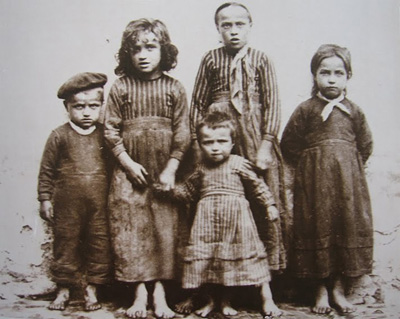|
The Poor of Paris
Frederick Brown, Zola: A Life (New York:
Farrar Straus Giroux, 1995), pp.66-67.
In 1862 Baron Haussmann
reported that if the municipal government were to feed everyinhabitant who
regularly went hungry or who

Working Class Children in the Second Empire |
sacrificed other necessities in order not to
starve, 1.07 million out of the 1.7 million Parisians would qualify for
help. The average worker spent between 35 and 63 percent of what he
earned on bread alone, and inflation, which saw prices rise far more
steeply than wages during Louis Napoleon's reign, narrowed his chances
of survival. Gendarmes arrested 35,000 vagrants in one year as the
population of those reduced to scavenging, begging, and whoring swelled.
Without rations from the municipality, they made do on garbage from the
imperial feast. "[Our maid] tells me that recently, while passing the
Maison d'Or on the morning after a masquerade ball, she saw a nun
collecting scraps in a little cart," Jules de Goncourt noted in February
1859. Every day, long before
dawn, chiffoniers –
ragpickers equipped with hooks, lanterns, and voluminous bags – fanned
out through the city. A familiar
a sight in Second Empire Paris as the child prostitute, the organ
grinder, and the ill-clad errand boy posted at street corners, they
scurried from rubbish bin to rubbish bin, along with rats crazed by the
demolitions that had exposed their nests beneath the former Marche des
Innocents. Homeless rats -- they, too, casualties of Napoleon Ill's
grand design -- became a veritable scourge.
|
